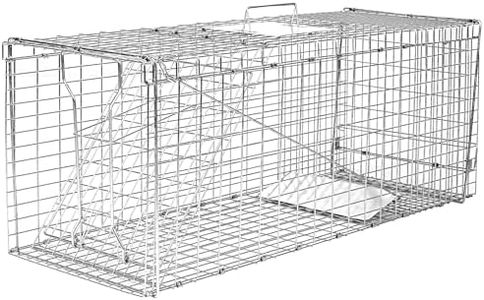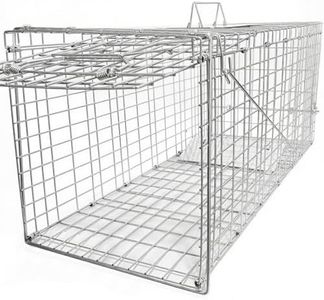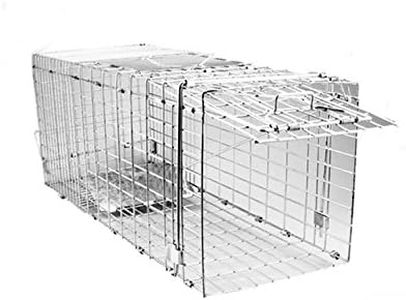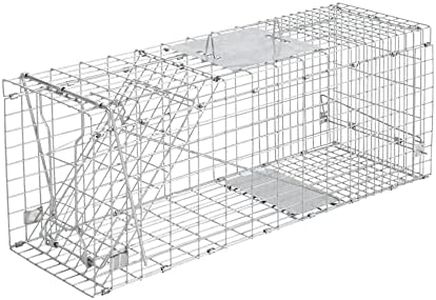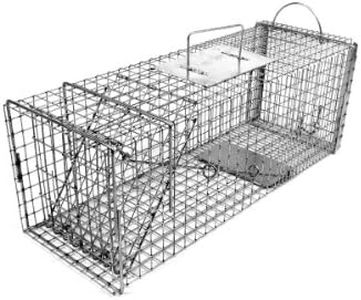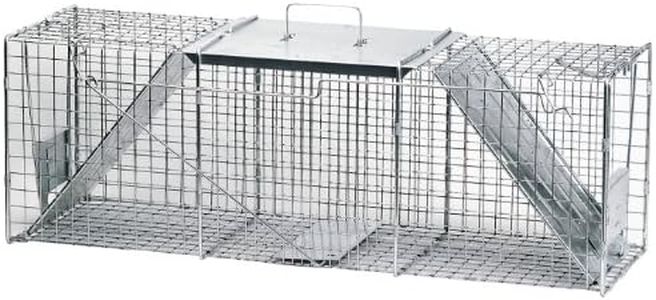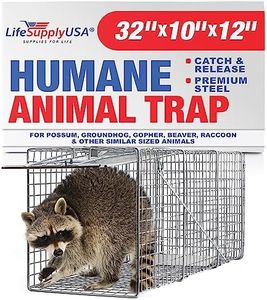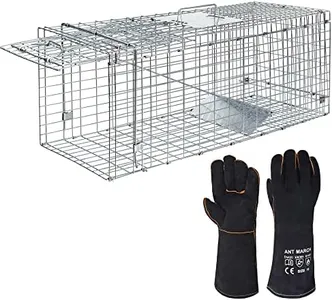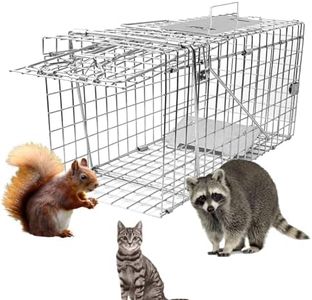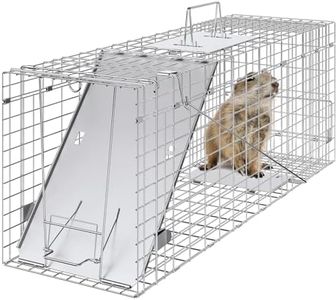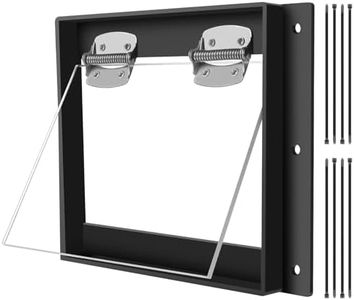We Use CookiesWe use cookies to enhance the security, performance,
functionality and for analytical and promotional activities. By continuing to browse this site you
are agreeing to our privacy policy
10 Best Raccoon Traps
From leading brands and best sellers available on the web.Buying Guide for the Best Raccoon Traps
Choosing the right raccoon trap can make a big difference in how successful, humane, and safe your trapping experience will be. It's important to use an appropriate trap that both prevents harm to the animal and makes it easy for you to set, check, and release or relocate as needed. When shopping for a raccoon trap, it's essential to understand the key features and specifications that affect performance and ease of use, so you can match your choice to your specific situation.Trap TypeThis refers to the basic design of the trap, such as live cage traps, dog-proof traps, or body-gripping traps. Most humane raccoon trapping should use live cage traps, which capture the animal without injury and allow for safe relocation. Body-gripping traps can be lethal and are generally not recommended for homeowners or in areas where pets might be present. Dog-proof traps are specialized for raccoons but are best for experienced users. Your need, such as whether you want to release the animal unharmed or not, will guide your choice.
Trap SizeTrap size measures the dimensions of the trap, particularly its length, width, and height. Raccoons are larger than many other common pests, so the trap needs to be large enough for the animal to comfortably enter. Too small, and the raccoon won’t enter; too large, and the trap may be harder to manage. Typical sizes range from around 24 to 36 inches long. For adult raccoons, a trap that’s at least 32 inches long and 12 inches high is a practical minimum. Match the size of the trap to the size of the animals you’re dealing with.
Material and DurabilityThis spec looks at what the trap is made from, usually focusing on things like galvanized steel or heavy-duty wire mesh. Durability matters because raccoons are strong and persistent, so flimsy traps may get damaged or allow escape. Galvanized finishes resist rust if you’re trapping outdoors. If you’ll be using the trap multiple times or in wet environments, look for strong, weather-resistant materials.
Door MechanismThe door mechanism is how the trap secures the raccoon inside once triggered, and can include options like spring-loaded or gravity doors. Spring-loaded doors shut quickly and are typically more secure, reducing the chances of escape. Gravity doors can be simpler, but may be easier for clever raccoons to open. Consider how quickly and securely the door shuts, and whether you will be able to release the animal safely when choosing your trap.
Ease of Use and SafetySome traps are easier to set and check than others. Features like one-handed setting, clear trigger mechanisms, and safety locks can make a big difference for first-time users. Safety for you, the animal, and any pets or children should be a top priority. Choose a trap design that matches your skill level and confidence, especially if you have to set the trap in tight, awkward, or public spaces.
Animal Comfort/Humane FeaturesHumane trapping aims to minimize stress and injury to the trapped animal. Look for features like smooth, rounded edges, adequate ventilation, and protective coverings for the animal once captured. Traps with 'no-pinch' mechanisms or shields keep the animal calmer and safer inside. If your goal is to relocate the raccoon, or if local regulations require humane trapping, prioritize traps with these features.
